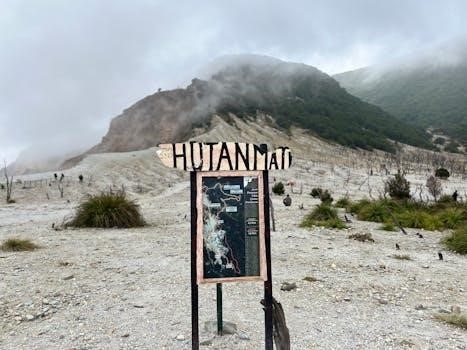
pinellas trail map pdf
The Fred Marquis Pinellas Trail is a linear, multi-use trail, a 53-mile urban path that connects various cities along the beautiful Pinellas County coast․ This trail is designed for everyone to enjoy, from St․ Petersburg to Tarpon Springs․
Overview of the Pinellas Trail
The Pinellas Trail is a remarkable paved pathway, stretching across Pinellas County, Florida, offering a scenic route for walking, jogging, cycling, and skating․ This former railway line has been transformed into a popular recreational amenity, connecting numerous communities from St․ Petersburg to Tarpon Springs․ The trail’s flat, well-maintained surface makes it accessible to users of all ages and abilities․ It meanders through urban landscapes, lush green spaces, and charming small towns, providing a diverse experience for those who explore its many miles․ The Pinellas Trail serves as both a recreational haven and a vital transportation link, encouraging a healthy, active lifestyle for locals and visitors alike․ Its continuous development and popularity underscore its importance to the region’s quality of life․
Pinellas Trail Map Availability
Pinellas Trail maps are readily available in various formats, including downloadable PDFs and printed versions․ These resources help users navigate the trail and explore its many points of interest․
Where to Find Pinellas Trail Maps
Locating a Pinellas Trail map is straightforward, thanks to several convenient options․ Many local bike shops in the Pinellas County area carry printed versions of the “Discover Pinellas” trail maps, which often include detailed information about the trail and surrounding areas․ Additionally, the Friends of the Pinellas Trail organization provides resources, including maps and guidebooks, through their website and potentially at local events․ The Pinellas County Parks and Conservation Resources website is another excellent source, often offering downloadable PDF versions of the trail map․ These digital maps are especially useful for planning your trip and accessing the information while on the go․ Furthermore, Forward Pinellas may also provide map resources through their website, so it’s a good idea to check their online offerings for the most up-to-date versions․ Finally, some third-party websites may host trail maps, but always verify the accuracy and freshness of the data;
Downloadable PDF Maps of the Pinellas Trail
Accessing a downloadable PDF map of the Pinellas Trail is incredibly convenient for planning your journey․ Several sources provide these digital maps, allowing you to view and save them on your devices․ The Pinellas County Parks and Conservation Resources website is a primary location to find these downloadable files․ The “Discover Pinellas” map, often available as a PDF, includes details of the trail, points of interest, and other relevant information․ Additionally, the Friends of the Pinellas Trail website may offer links to PDF maps, as well as guidebooks and related resources․ Checking Forward Pinellas’ online resources is another way to discover downloadable versions of the trail map․ These PDF maps are useful not only for planning but also for use while on the trail, providing a portable and readily accessible guide․ Some third-party resources may also offer PDF maps, but it’s always best to verify their accuracy and ensure they are up-to-date․

Key Features on the Pinellas Trail Map
Pinellas Trail maps highlight crucial features such as the trail’s start and end points, significant landmarks, trail connections, and available amenities like water fountains and picnic areas․ These details aid navigation and planning․
Trail Start and End Points
The Pinellas Trail, as depicted on the map, has clearly defined start and end points, facilitating easy planning for users․ The trail officially begins at Pioneer Park in downtown St․ Petersburg, offering a scenic starting point․ The northern terminus of the main Pinellas Trail is located in Tarpon Springs, providing a distinct end point for those traversing the entire length․ These endpoints are crucial for planning a complete trip or segmenting the trail for shorter excursions․ Maps often detail the specific locations of these points, sometimes including addresses or nearby landmarks to ensure clarity․ Understanding the starting and ending points is fundamental for all users aiming to explore the trail effectively, whether they are starting a new adventure or completing a long journey․ Pinellas Trail maps include these markers․
Points of Interest and Landmarks
Pinellas Trail maps highlight numerous points of interest and landmarks along the path, enriching the user experience․ These maps often pinpoint locations such as the Pinellas Trailside Oasis near Curlew Road, where picnic tables and a drinking fountain are available․ The historic Andrew Chapel, near Hammock Park, is another notable landmark often marked․ Other points of interest may include local parks, scenic overlooks, and historical markers․ Maps will help users identify these locations to plan their journey accordingly, perhaps stopping to rest or explore․ The presence of these landmarks transforms the trail from a simple path to an engaging journey through Pinellas County, providing opportunities for recreation and exploration, and making the trail experience much more than just a route․ Users are encouraged to use these to explore and enjoy the Pinellas trail․
Trail Connections and Intersections
Pinellas Trail maps clearly indicate trail connections and intersections, which are vital for navigation and trip planning․ These maps show how the Pinellas Trail links with other trails, such as the Duke Energy Trail, forming a network that extends beyond the main route․ Intersections with local roads and highways are also clearly marked, helping users to safely navigate these crossings and continue on their journey․ Detailed maps often delineate the various segments of the trail, including temporary trail ends and detours․ These connections allow users to create longer or shorter routes, depending on their preference, and are crucial for understanding the overall trail network within Pinellas County․ Understanding these connections is critical for safe and efficient trail usage, ensuring users can get to their destination․
Amenities Along the Trail (e․g․, water fountains, picnic areas)
Pinellas Trail maps often highlight the locations of key amenities, ensuring users can easily find what they need during their journey․ These amenities include essential features such as drinking fountains, which are crucial for staying hydrated, especially during warmer months․ Picnic areas, often found at scenic spots along the trail, provide ideal locations for rest and refreshment․ The maps also indicate the presence of restrooms, helping users plan their stops effectively․ Some sections of the trail may feature additional amenities, such as benches, shaded areas, or even small parks located adjacent to the path․ The Pinellas Trailside Oasis, for instance, offers picnic tables and a drinking fountain, making it a great spot to take a break․ These mapped amenities help users plan trips, ensuring they are comfortable and prepared․

Trail Network Details
The Pinellas Trail is part of a larger network, connecting with adjacent trails and offering future extensions․ It’s important to note that the Duke Energy Trail forms part of the Pinellas Trail Loop․
Adjacent Trails and Connections
The Pinellas Trail is not an isolated path; it is a vital part of a larger trail network in Pinellas County․ It connects seamlessly with various adjacent trails, enhancing the overall experience for users․ One notable connection includes the Bayway Trail, which offers access to other scenic areas․ Additionally, the trail system integrates with on-street routes and shared-use lanes, providing a more extensive network for cyclists and pedestrians․ The existing equestrian trails also form part of the broader network, although they are separate from the main Pinellas Trail․ These interconnections allow users to explore different parts of the county and create varied routes for recreation and commuting․ Furthermore, planned community trails will further expand this network and offer even more options for exploration․ The Pinellas Trail also connects with the Legacy Trail and provides links to other regional trails․
Planned Trail Extensions
The Pinellas Trail is continuously evolving, with several planned extensions aimed at further enhancing its connectivity and reach․ These planned expansions include the addition of new sections to the existing trail, ensuring a more comprehensive network․ Proposed community trails are also part of the future development, designed to link neighborhoods and provide more access points․ The planning includes the implementation of new bike and shared-use lanes, creating safer routes for cyclists․ These extensions will be integrated with the existing infrastructure, utilizing both on-street and dedicated trail pathways․ The goal is to provide a seamless and accessible experience for all users․ These expansions are designed to further connect various parts of Pinellas County and ensure the Pinellas Trail system remains a premier destination for recreation․

Trail Usage and Safety
The Pinellas Trail is a multi-use path, and following guidelines ensures everyone’s safety․ It is important to adhere to all rules for a pleasant and secure experience while enjoying the trail․
Multi-Use Trail Guidelines
The Pinellas Trail is designed as a multi-use trail, welcoming walkers, runners, cyclists, and other non-motorized users․ To ensure a safe and enjoyable experience for everyone, it’s crucial to adhere to some basic guidelines․ Always be mindful of other trail users and share the path respectfully․ Stay to the right side of the trail, and pass on the left, providing audible signals when overtaking others․ Keep pets on leashes and clean up after them․ Be aware of your surroundings and avoid distractions like using headphones at high volumes․ Cyclists should yield to pedestrians and maintain a safe speed․ Following these guidelines helps maintain a harmonious environment for all․
Safety Tips for Trail Users
Prioritizing safety is essential when using the Pinellas Trail․ Always be aware of your surroundings and avoid using headphones at a high volume, which can reduce your ability to hear approaching cyclists or other trail users․ Carry water to stay hydrated, especially during warmer weather․ Wear appropriate clothing and consider using sunscreen and a hat to protect yourself from the sun․ If cycling, make sure your bike is in good working order and wear a helmet․ It is also wise to inform someone of your planned route and estimated return time․ Be cautious at intersections and crosswalks and follow all traffic signals and signs․ By following these tips, you can enjoy a safe and pleasant experience on the Pinellas Trail․

Organizations and Resources
Several organizations support the Pinellas Trail․ These include Friends of the Pinellas Trail, and Pinellas County Parks and Conservation Resources, which are instrumental in trail upkeep and information dissemination․
Friends of the Pinellas Trail
The Friends of the Pinellas Trail, Inc․ is a key organization dedicated to supporting and enhancing the Pinellas Trail․ They are a non-profit group that actively promotes the trail through various initiatives and programs․ The organization plays a crucial role in the maintenance and preservation of the trail, ensuring it remains a safe and enjoyable space for all users․ Their efforts often include volunteer work, fundraising activities, and community engagement projects․ They also provide important information regarding trail updates, events, and resources, often directing users to helpful maps and guides․ The Friends organization is vital for the trail’s continued success and community involvement․
Pinellas County Parks and Conservation Resources
Pinellas County Parks and Conservation Resources is the governmental body responsible for the operational costs and upkeep of the Pinellas Trail․ This department ensures that the trail is well-maintained and safe for public use․ They oversee various aspects of the trail, including the management of amenities, infrastructure, and any necessary repairs․ Additionally, this department plays a crucial role in the planning and development of trail extensions and improvements․ They often work in collaboration with other organizations, such as the Friends of the Pinellas Trail, to enhance the overall trail experience․ Pinellas County Parks and Conservation Resources also provides valuable resources, including maps and guides, to assist trail users in their journeys․

